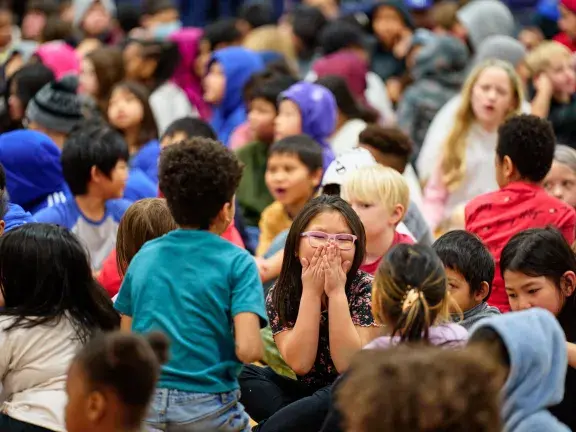
Register by October 17 to Secure Your Spot!
| Registration Type | Member Price |
|---|---|
| Early Bird Registration (Sept. 11-Oct.3) | $750 |
| General Registration (Oct. 4-Oct.17) | $850 |
| Registration Type | Member Price |
|---|---|
| Early Bird Registration (Sept. 11-Oct.3) | $750 |
| General Registration (Oct. 4-Oct.17) | $850 |
| Registration Type | Member Price | Non-Member Price |
|---|---|---|
| Early Bird Registration (Sept. 11-Oct. 3) | $750 | $850 |
| General Registration (Oct. 4-Oct.17) | $850 | $950 |
Not a member? We'd love to have you join us for this event and become part of the Chorus America community! Visit our membership page to learn more, and feel free to contact us with any questions at [email protected].
| Registration Type | Non-Member Price |
|---|---|
| Early Bird Registration (Sept. 11-Oct. 3) | $850 |
| General Registration (Oct. 4-Oct.17) | $950 |
Think you should be logged in to a member account? Make sure the email address you used to login is the same as what appears on your membership information. Have questions? Email us at [email protected].
| Registration Type | Price |
|---|---|
| Individual Session | $30 each |
| All Four (4) Sessions | $110 |
*Replays with captioning will remain available for registrants to watch until November 1, 11:59pm EDT.
Member Professional Development Days are specially designed for Chorus America members. If you're not currently a member, we'd love to welcome you to this event, and into the Chorus America community! Visit our membership page to learn more about becoming a member of Chorus America, and please don't hesitate to reach out to us with any questions at [email protected].
| Registration Type | Price |
|---|---|
| Individual Session | $30 each |
| All Four (4) Sessions | $110 |
*Replays with captioning will remain available for registrants to watch until November 1, 11:59pm EDT.
| Registration Type | Price |
|---|---|
| Individual Session | $30 each |
| All Four (4) Sessions | $110 |
*Replays with captioning will remain available for registrants to watch until November 1, 11:59pm EDT.
Member Professional Development Days are specially designed for Chorus America members. If you're not currently a member, we'd love to welcome you to this event, and into the Chorus America community! Visit our membership page to learn more about becoming a member of Chorus America, and please don't hesitate to reach out to us with any questions at [email protected].

The return to school is here, and as the latest cohort of Chorus America’s Music Education Partnership Grants enters its second school year, we have a wonderful opportunity to reflect on the valuable lessons we’ve learned from our grant partners across Canada and the US.
During the 2024-2025 Music Education Partnership Grant school year, over 7,000 students were involved in projects funded by the grants. These projects, which totaled 23, partnered with 118 schools across the United States and Canada, distributing $500,000 to support music education.
As part of our Strategic Plan and commitment to meaningful, measurable steps to ensure the representation of - and service to - the diversity of the choral field, it’s especially important that we understand who is being impacted by Chorus America grants. Informed by racial and ethnic demographic data submitted by the current grantee cohort, the 2025 Music Education Partnership Grants Impact Report provides an initial overview of who is engaged in funded projects and how these grants are being utilized.
Thanks to generous support from Margaret A. Cargill Philanthropies, Chorus America can award grants to 4 specific geographic regions: British Columbia & the Northwest US, Central Appalachia, the Southwest US, and Upper Midwest US. A full list of the current 23 grant partners can be found here.
Within these regions, over 7,000 students participated in projects funded by a Chorus America grant. Of the students engaged, 42% identify as White, 26% as Latinx/Hispanic, 12% as Black, 12% as Asian, South Asian, or Pacific Islander, 3% as Multiracial, and 1% as Indigenous.

With teaching staff and teaching artist demographic data, there is more representation among White, Black or African-American, Indigenous, and Multiracial identifying teaching staff, and less representation among Asian, South Asian, or Pacific Islander and Latinx/Hispanic teaching practitioners.

The largest variance in the data is among leadership, where we see a substantial increase in the percentage of individuals who identify as White.

This type of data collection is valuable in helping us understand how grants support the racial and ethnic diversity of each region, and how that compares with each region’s own census data. The data collected also revealed that grants are most frequently used to support the people that make this work possible. Overwhelmingly, grants are primarily used to support teaching artists and teaching staff, with staff salaries and music, performance rights, and instruments also being common expenditures covered by grant funds.
Our learning was not restricted to quantitative data collection. In conversations with grant partners, we’ve learned that these projects are providing cross-cultural singing opportunities to empower students and build stronger communities. As a result, schools have observed positive attendance and engagement. We’ve also found that learning is not limited to students—classroom teachers, administrators, and school culture as a whole benefit from these partnerships.
Since our regranting work began, the world has only grown more complex, and access to diverse, culturally affirming musical experiences has become more limited. We are grateful to Chorus America Grant Partners, because we know that the process of understanding different perspectives is powerful when it starts in the classroom. We encourage you to learn more about the projects supported by the Music Education Partnership Grants here.
Kimberly Theodore Sidey is Director of Grants at Chorus America, where she oversees the music education grants review process, collection of data and impact, and learning cohort for Chorus America’s grant partners.